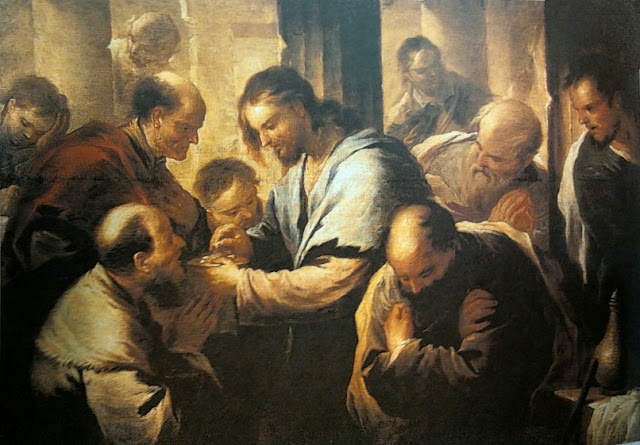On Sundays, the responsorial psalm often gives us a clue or insight into the theme of the readings of the Mass. For example, today the psalmist says, “Lord, let us see your kindness and grant us your salvation.” Those words tell us that the psalmist’s prayer was being made in difficult circumstances. Maybe the psalmist was going through a difficult time personally, or maybe the whole Israelite people were facing some calamity, but you only cry out to God to show his kindness and salvation when those things are not at that moment readily apparent.
We might well imagine that the words of this psalm – “Lord, let us see your kindness and grant us your salvation” – were on the minds of the disciples in today’s Gospel. They are in very dire straits: caught in a storm, their boat being tossed about on the rough sea, and Jesus not with them. And this story is perhaps symbolic of inner turmoil that was going on within them at the same time. Shortly before this story in Matthew’s Gospel, Jesus and the disciples receive word that John the Baptist had been beheaded. The death of Jesus’s cousin, whom some of the disciples had followed before they followed Jesus, surely filled them with sorrow and grief. And it probably also gave rise to fear – fear that perhaps a similar fate awaited Jesus and perhaps even themselves.
So, turmoil, distress, fear – our Scriptures today focus upon those realities. And that’s a good thing, because those realities are our realities, too – each of us, in some way, because of one or more circumstances in our lives, face something that is causing inner turmoil, or filling us with fear, or giving us anxiety. The question is how do we respond? Often, we are tempted to act based solely on the way we are feeling in that moment. Because we are feeling afraid, and because we don’t like that feeling, we are tempted to alleviate our fear in any way possible – by denying it, or rationalizing it, or numbing it.
 |
| Christ Walking on the Sea, Currier & Ives, 19th cent. |
What our readings today invite us to consider is how fear and turmoil, as unpleasant as they may be, are also an invitation into a deeper faith. To do so, sometimes we have to enter into our fear and wait. Sometimes the Lord does not alleviate our fears right away – not because he wants us to suffer, but because he wants us to recognize our total dependence on him. And fear has a great way of doing that. In the midst of fear, there is a temptation to abandon faith altogether; but there’s also the chance to see more clearly what is true. There’s an opportunity to make the prayer of the psalmist our own – “Lord, let us see your kindness and grant us your salvation.”
Friends, like the disciples, our boats are at times tossed about on rocky seas. In those moments, let’s turn fully to the Lord, leaving behind our own devices and self-made ideas. Let’s offer a prayer – our own words, or perhaps the words God has given to us in the Book of Psalms. And may that prayer help us to know that the Lord will surely come, just as he did in the Gospel, just as he does in this Mass. When he does, may he find us with deepened trust in him – not having tried to sort things out ourselves, but rather seeing our turmoil and difficulty as the instruments by which he invites us to a new level of faith.
“Lord, let us see your kindness, and grant us your salvation.”

